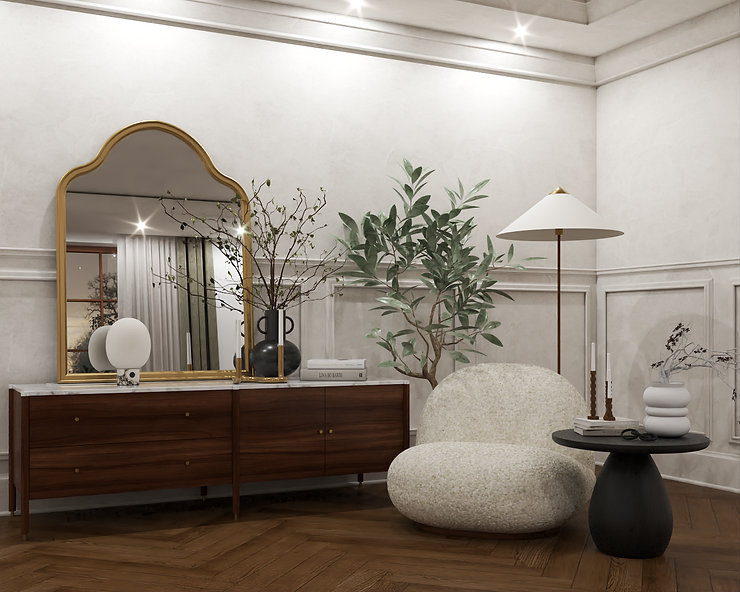Guide to Lighting for a Cozy Living Room
Three important points make the lighting setup look high-end, and that create those Instagramable corners in your living room or work area.
Ambient/General Lighting – This includes the overhead lamps, chandeliers, and other parts of the lighting that are there specifically to fill the space with light.
Accent Lighting – One of the most important parts in the design of any room. Accent lighting is used to give character and atmosphere to your environment. It will turn a simple room into an inviting, comfortable environment for you to spend your time. Think of candles, picture lights, spotlights, and indirect LED lights. It will also be a great way to attract attention to specific parts that you prefer and visually camouflage what you would rather not show.
Task Lighting – This one is pretty straightforward. It is lighting that will help you complete a specific task, be that a table lamp on your desk, a floor lamp near your sofa or a bedside pendant lamp; they all have one specific function: to help you complete your tasks more comfortably without straining your eyes.

How to Choose the Right Shade of Light for Your Space
Cool light or warm Light? People often have a dilemma about which one is best. The answer to that would be – both, depending on the intended use. Cool-toned lights have been proven to have a positive effect on increasing alertness and improving focus, while simultaneously reducing drowsiness, making cool lights the best choice for offices, classrooms, and other spaces that require precision and focus. However, since it has also been proven that cool lights disrupt your circadian rhythm by suppressing levels of melatonin, they might not be the best choice to use in your home.
Warm-toned lights, on the other hand, will help increase levels of melatonin, preparing the body to relax, and go to sleep, so they are definitely more suitable for residential use. If you want to create a balance, you can use cooler or neutral tones for your ambient lighting and warmer tones for accent lighting.
Direction and Position of Light: The Psychological Impact
Lighting can be a strong indicator on how a person feels within a space. You can create intimate spaces, by using low level lighting, with a small perimeter and diffused distribution, keeping the surrounding space darker. The complete opposite effect will be achieved by highlighting the walls and ceiling. The space will automatically feel larger and brighter.
See below how different lighting has an effect on the same space. Good or bad lighting can cause drastic changes when transitioning from daylight to night.


The chart below from the Illuminating Engineering Society (IES) shows the effects of different lighting on the human brain.
| Psychological Impact | Lighting Effect | Light Distribution |
|---|---|---|
| Tense | Intense direct light from above. | Non-uniform |
| Relaxed | Lower overhead lighting with some lighting at room perimeter, warm color tones. | Non-uniform |
| Work/Visual Clarity | Bright light on workplane with less light at the perimeter, wall lighting, cooler color tones. | Uniform |
| Spaciousness | Bright light with lighting on walls and possibly ceiling. | Uniform |
| Privacy/Intimacy | Low light level at activity space with a little perimeter lighting and dark areas in rest of space. | Non-uniform |
Understanding the Color Rendering Index
Besides the tone and overall brightness of the light, we also have to think of CRI. Each lamp has it’s place on the Color Rendering Index chart, which measures from 0 to 100. The higher on the chart, the more accurate the rendering of the colors will be, always comparing to the sun which has a 100 CRI.
With a high CRI your environment will look bright and vibrant, and with a low CRI everything will look dull – even if this lamp is brighter than the first one. Avoid lamps that have a CRI below 85, because they might distort color. Anything above 90 is an excellent choice.
See the chart below to help you classify good from poor CRI ratings
| Rating | Score | Description |
|---|---|---|
| Excellent | 90-100 | Most accurate color rendering |
| Good | 60-85 | Acceptable, may have some distortion |
| Poor | 0-55 | Distortions in color are obvious |
Use Lamps as Statement Décor pieces
Who said lamps are only meant for lighting? Choose lamps that speak to you, and express your personality! Here is an array of lamps that I have used on the project above, with a few more favorites that will definitely be focal points in every space.
Don’t shy away from mixing and matching! Play with different heights, colors, and materials. Have fun with your home design! If it doesn’t make you happy, you’re not doing it right.





